|
|
Advertisement:
|
|
Intel 6xx Series and 3.73GHz Extreme Edition CPUs |
|
Join the community - in the OCAU Forums!
|
Gaming, Video & Audio Benchmarks
GAMING:
We benchmarked gaming performance with some of the latest and most demanding versions of contemporary 3D games: Half Life 2, Doom 3 and Far Cry. In addition we ran the popular 3DMark2005 benchmark. Since the arrival of the A64, AMD has been clearly ahead in gaming performance. Can the 6xx series change this situation?
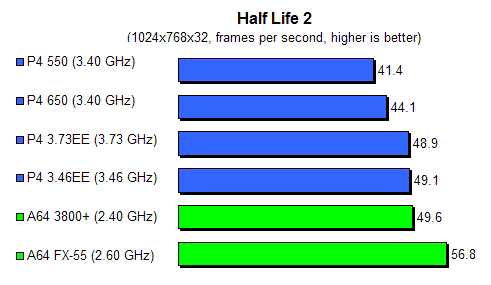
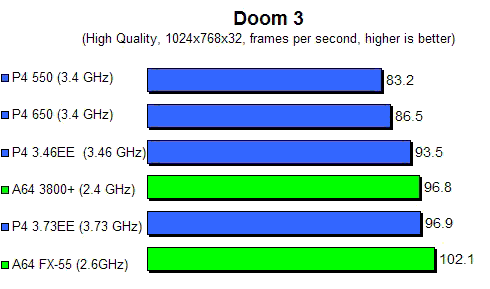
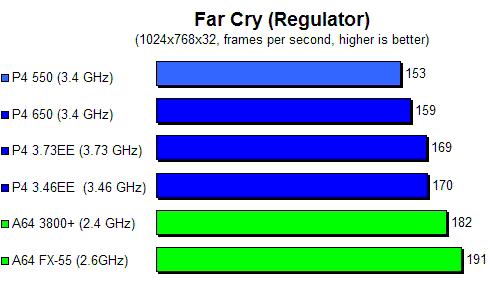
Our results show that the additional MHz does not help the Prescott based 3.73 GHz EE against the Gallatin based 3.46 GHz EE. The latter still seems to be better performing in most games. Probably the deeper pipelines on the Prescott core are preventing a better result. The picture looks different if we compare the 550 and the 650: the 1 MB additional cache seems to have a small but visible impact on performance. The 650 is providing up to 6% more frames per second than the 550. Although this is the biggest gain we found in all our benchmarks, it is not enough to beat the A64. The FX55 is still leading the pack by around 10%. The 3.46 GHz EE and the 3.73 GHz EE are more or less performing at the level of an A64 3800+.
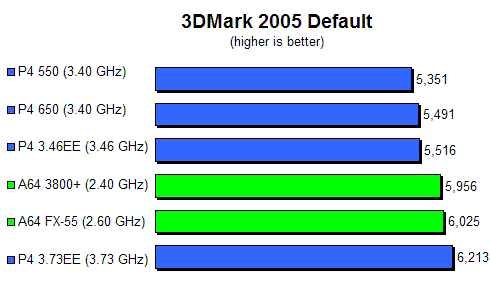
3DMark 2005 however shows all processors relatively close together with the 3.73 GHz EE taking the lead. It appears that 3DMark2005 which is supposed to be a benchmark for contemporary gaming has little relevance when we get an entirely different picture in actual gaming.
VIDEO AND AUDIO ENCODING:
For benchmarking video and audio encoding performance we are again using WorldBench test modules. Microsoft Media Encoder, Roxio VideoWave, and MusicMatch Jukebox are widely used applications for video and audio encoding.
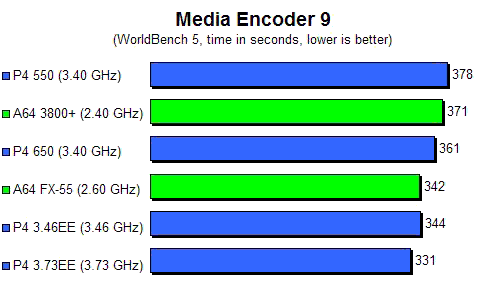
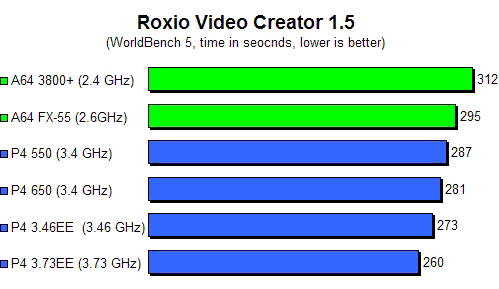
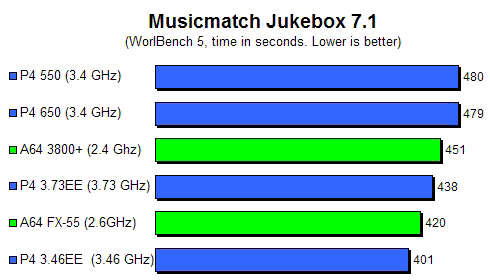
It seems a doubled L2 cache does not have much impact on them. In Roxio and Jukebox the difference is less than 2% and in Media Encoder a little less than 5%. In Jukebox the 3.46 GHz EE takes the overall lead and is even beating the 3.73 GHz EE. In the same way as the A64 are playing havoc with the Intel competition in gaming, so do P4 when it comes to video and audio compression. Many of these applications are optimized for NetBurst architecture and many newer ones are using SSE3 optimizations. The 6xx series has further extended the P4ís lead in this field, albeit only marginally.
VIDEO AND IMAGE EDITING AND 3D RENDERING:
Photoshop and ACDSee (WorldBench test modules) show both little difference between the 650 and the 550. The increased L2 cache seems to have almost no impact on picture viewing and editing. In both applications the A64 are leading their Intel counterparts.
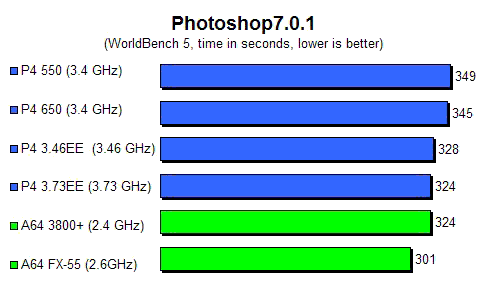
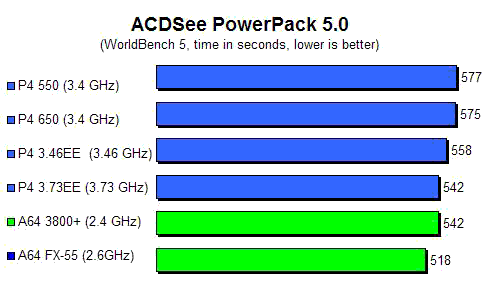
We benchmarked 3D rendering performance with Cinebench 2003, an OpenGL based software suite for 3D modeling, animation, and rendering. The CPU rendering test in Cinebench 2003 can be configured to run in single or multiprocessor mode. We ran the test in both modes for the P4 processors. A64 are only capable of running the single processor test.
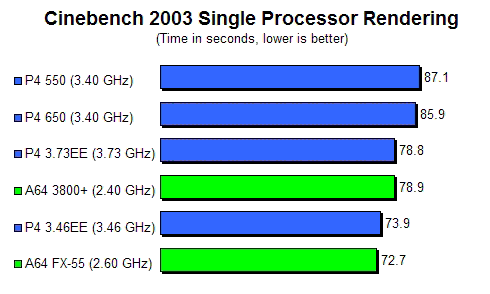
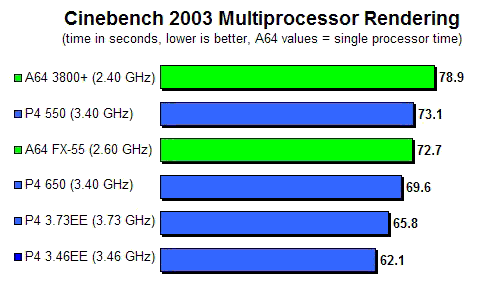
The single processor rendering test shows the 650 a meager 2% ahead. When the same 3D scene is rendered multithreaded the difference is almost 5%. The single processor benchmark shows both A64 leading their counterparts; in multiprocessor mode Intel has the upper hand.
|
|
Advertisement:
All original content copyright James Rolfe.
All rights reserved. No reproduction allowed without written permission.
Interested in advertising on OCAU? Contact us for info.
|

|


